Newly appointed Japanese Prime Minister Sanae Takaichi started off her term with high approval ratings, in a show of optimism that she could deliver on her pledges that include countering inflation and strengthening the economy.
Takaichi has…
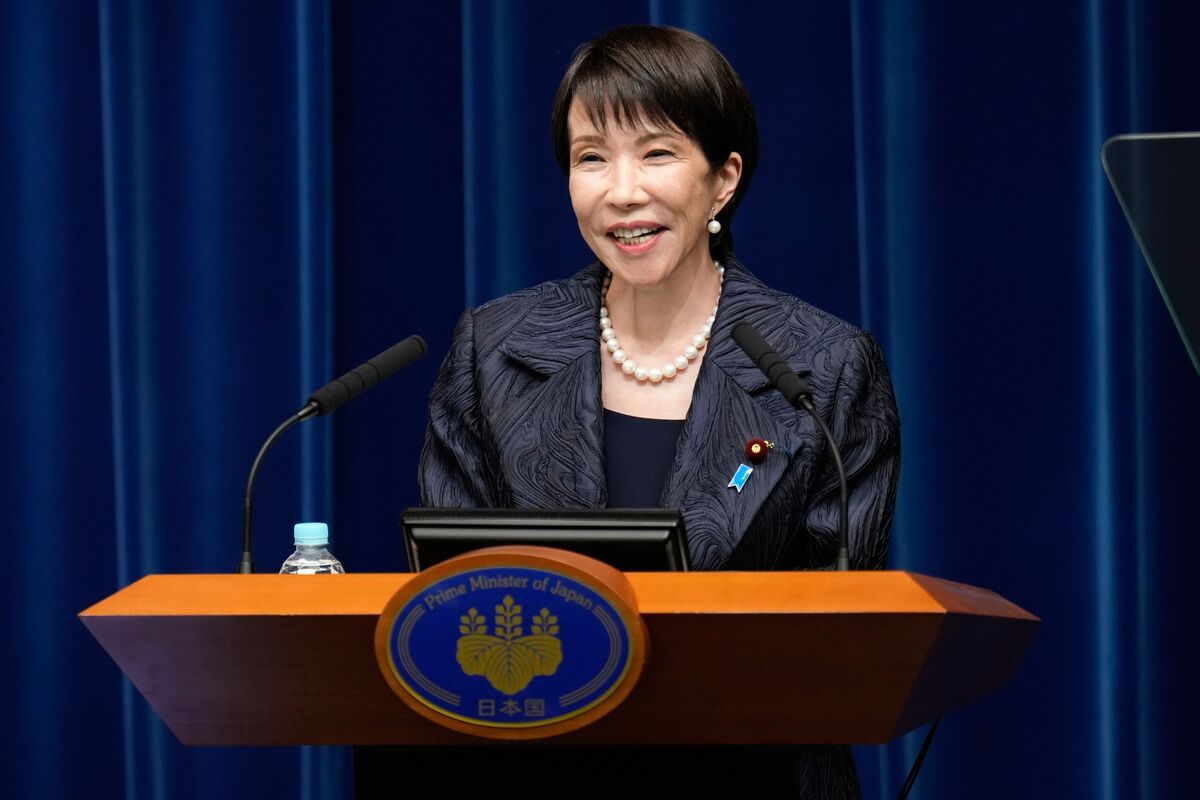
Newly appointed Japanese Prime Minister Sanae Takaichi started off her term with high approval ratings, in a show of optimism that she could deliver on her pledges that include countering inflation and strengthening the economy.
Takaichi has…

Cancer is one of the deadliest diseases worldwide and remains the second-leading cause of death. Despite major progress in medical treatments, early detection, and preventive care, it continues to be a serious global health concern. Experts…
BEIJING, Oct. 21 — In 1985, the eastern Chinese city of Xiamen was a study in contrasts.
A newly designated Special Economic Zone, it buzzed with the anxious energy of a nation just cracking…
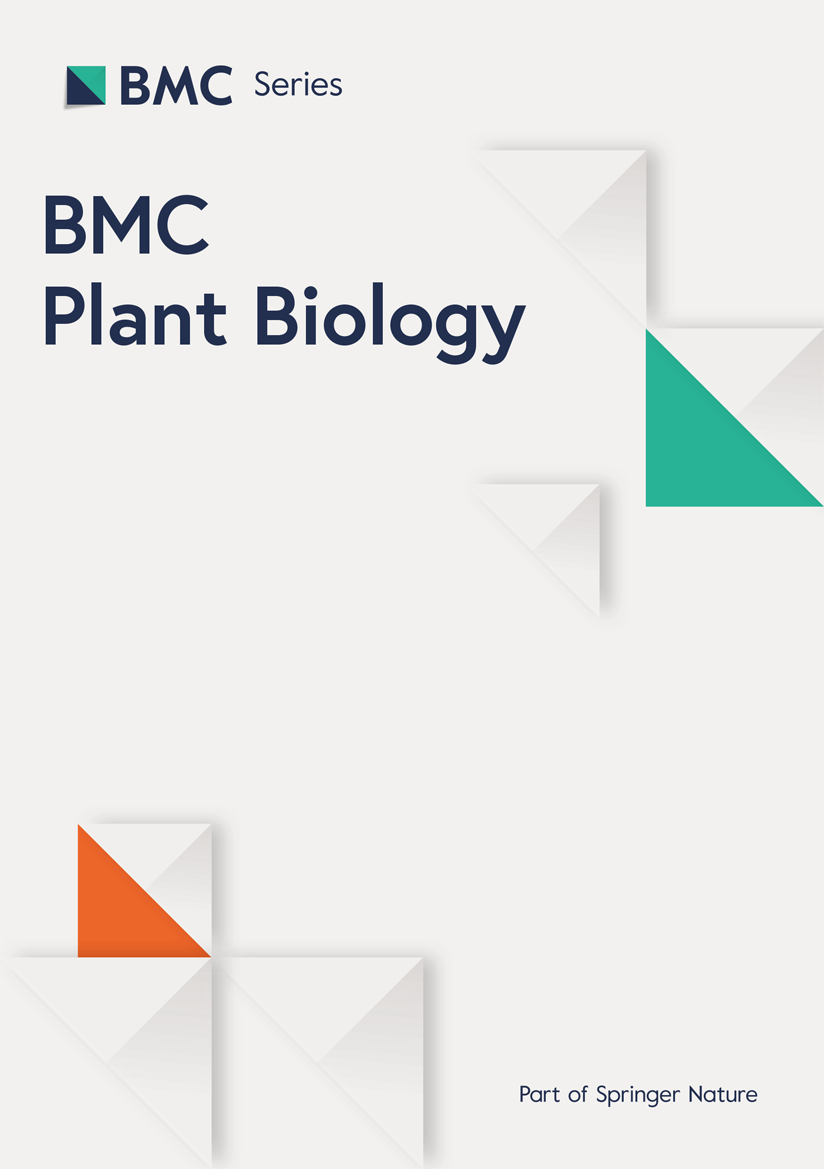
Regasa GH. A review on the economic Importance, epidemiology and management practices of soybean rust (Phakopsora pachyrhizi). Int J Curr Res Acad Rev. 2021;9(9):26–36.
Pérez-Pizá MC, Prevosto…
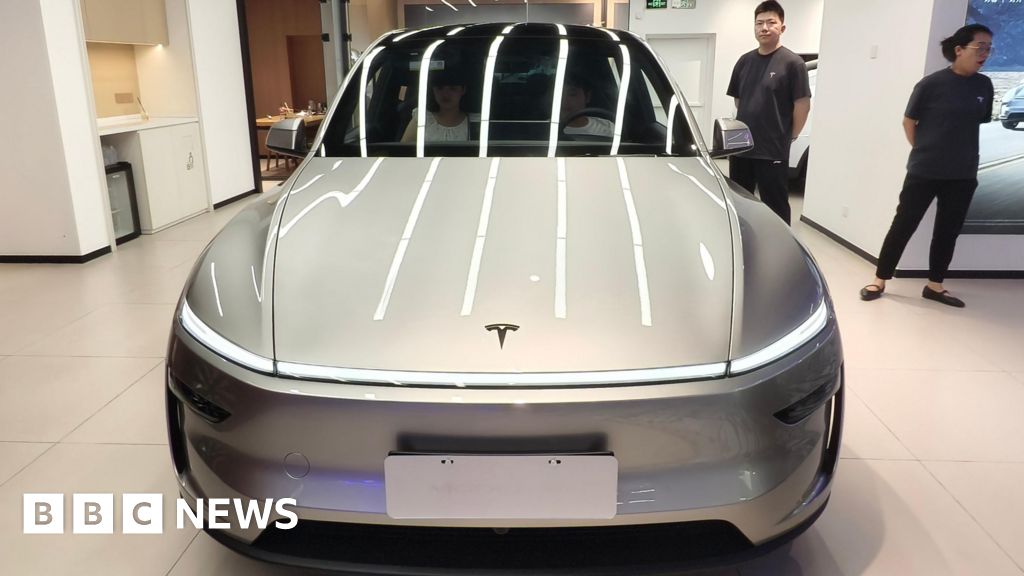
Tesla has seen its profits slide even as it reported record quarterly revenue after US buyers rushed to secure a key tax credit on electric car purchases before it ended last month.
The firm said revenue for the three months to the end of September hit a record $28bn (£21bn), up 12% from the same time last year.
But the company’s profits dropped by 37% for the same period, partly due to extra costs linked to tariffs and research.
The results come ahead of a vote by shareholders in November on a new pay package for chief executive Elon Musk that could be worth as much as $1tn.
Tesla shares were down by around 3.8% in extended trading after the results were announced.
The company’s roughly $1.4tn stock market valuation has been driven in recent months by investor confidence that Musk can deliver on his ambitions to transform Tesla into a global leader in artificial intelligence (AI) and robotics.
But sales of vehicles currently remain its main source of income while those new products are being developed.
Like other car makers around the world, Tesla is facing tough competition from Chinese rivals such as BYD.
Tesla reversed a streak of declining quarterly sales as American buyers rushed to claim federal tax credits of up to $7,500 before they expired at the end of September. But rivals like Ford and Hyundai posted even stronger US sales growth during the same period.
During the quarter, Tesla rolled out a six-seat version of its best-selling Model Y vehicle, which saw particular success in China.
It also offered incentives to entice buyers like five-year interest-free loans and insurance subsidies.
Tesla is also grappling with the levies imposed on imports of car parts and raw materials by US President Donald Trump.
In a call with investors on Wednesday, Tesla’s finance chief Vaibhav Taneja said tariffs cost the firm more than $400m in the last quarter.
Higher expenses linked to research and development, particularly in its AI initiatives, also weighed on Tesla’s profits.
Mr Taneja said he expected that kind of spending to continue to rise.
In October, Tesla unveiled cheaper models of two of its best-selling cars in the US, in a bid to lift sales as federal incentives expire.
The company rolled out new versions of its Model Y and Model 3 cars, which are priced at about $5,000 less than earlier versions.
Still, Tesla’s shares fell as investors were underwhelmed by the new cars.
The company has been criticised for being slow in offering more affordable cars, often seen as a reason that it has lost ground to competitors.
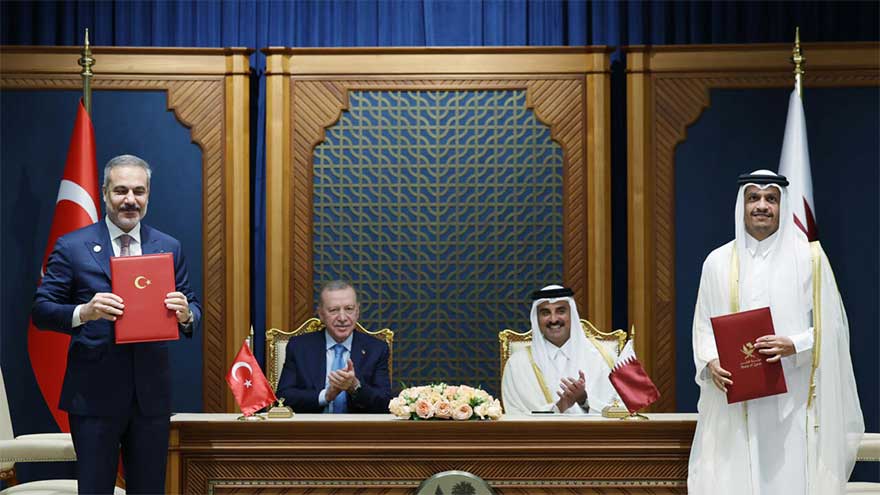
DOHA (AFP) – Turkey and Qatar intensified efforts to preserve the fragile Gaza ceasefire, with their leaders meeting in Doha Wednesday as diplomatic and intelligence chiefs coordinated to prevent renewed fighting,…

If you notice creeping fatigue, stubborn weight, brain fog and mood swings in your midlife, it is a nudge that you are not alone as many people face this…
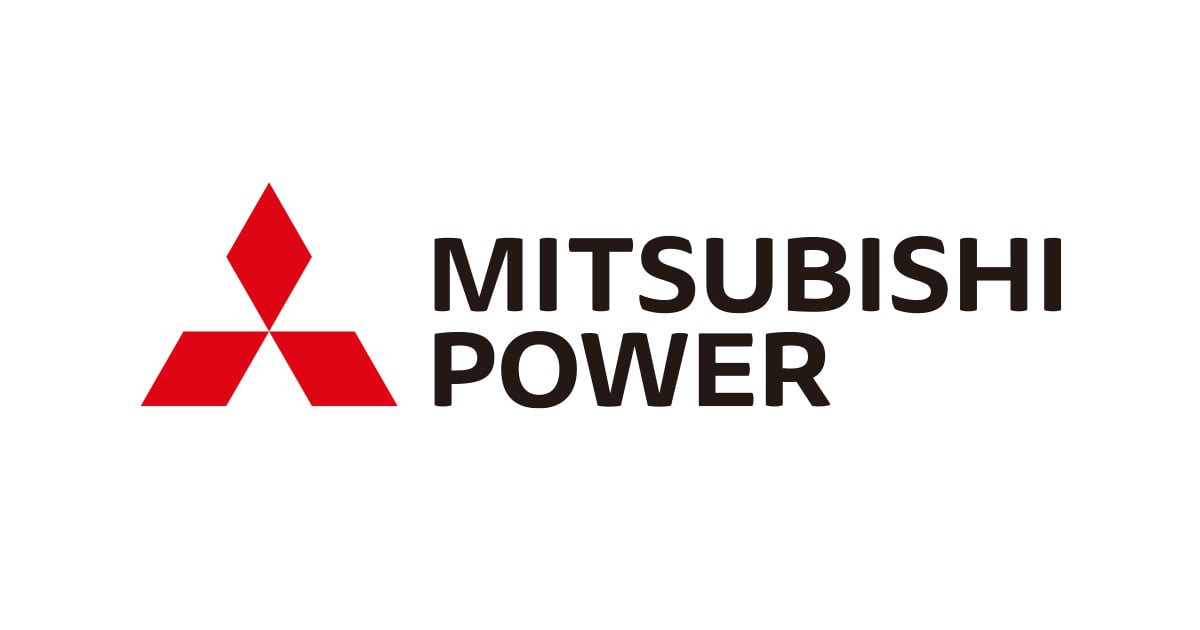
From left (seated): Daichi Nakajima, EVP, Mitsubishi Power, Yu Tat Ming, CEO, PacificLight Power, Koichi Watanabe, CEO and MD, Jurong Engineering Limited at the EPC contract signing.
Singapore, October 23, 2025 – A consortium comprising Mitsubishi Power, a power solutions brand of Mitsubishi Heavy Industries, Ltd. (MHI) and Jurong Engineering Limited (JEL) has been awarded an Engineering, Procurement, and Construction (EPC) contract by PacificLight Power Pte. Ltd. (PLP) to develop the largest, high efficient combined cycle gas turbine (CCGT) facility in Singapore. The power plant will be the first CCGT unit in Singapore integrated with a large-scale battery energy storage system (BESS), enabling dynamic energy management to align electricity supply with grid demand.
Located on Jurong Island, Singapore, the 670MW facility, capable of powering more than 965,000 four-room flats, is scheduled to begin operations in 2029. It will have the ability to operate on 30% hydrogen and will be capable of shifting to run entirely on hydrogen in future.
The new CCGT power plant will deploy Mitsubishi Power’s state-of-the-art M701JAC gas turbine with hydrogen co-firing potential, as the power sector works towards net zero carbon emissions. This gas turbine is recognized as the world’s most efficient large-frame gas turbines, with more than 64% combined cycle efficiency and proven reliability through three million operational hours.
Yu Tat Ming, CEO of PLP said, “This project represents a significant leap forward in PacificLight’s decarbonization journey and our commitment to powering Singapore with cleaner, more resilient energy. By investing in large-scale energy storage and hydrogen-ready technology, we are future-proofing our infrastructure to meet future energy demands. We are proud to partner Mitsubishi Power and Jurong Engineering in advancing Singapore’s sustainable future for generations to come.”
Daichi Nakajima, Executive Vice President, Mitsubishi Power, said, “Mitsubishi Power is honored to partner JEL to build PLP’s monumental project that would support Singapore’s growing electricity needs and broader energy transition goals. Our hydrogen-ready gas turbines, along with the innovative integration of BESS, contribute to future-proof infrastructure crucial to Singapore’s decarbonization goals. We are committed to working alongside our partners to support this large-scale development that is making history in Singapore’s energy sector.”
Koichi Watanabe, CEO and MD of JEL, added, “The development of the CCGT plant marks an important step in advancing the nation’s cleaner energy goals. Drawing on our proven experience in large-scale EPC projects along with Mitsubishi Power’s track record in highly efficient gas turbines, this collaboration reflects a strong synergy and shared commitment to delivering this large-scale facility to the highest standards. In support of PLP, we look forward to helping to enhance the resilience and flexibility of Singapore’s power systems.”
PLP currently owns and operates an 830MW CCGT facility and a 100MW Fast Start Ancillary Services facility on Jurong Island. The 830MW CCGT facility is one of the most efficient and reliable combined cycle power plants currently operating in Singapore.
Mitsubishi Power has maintained a longstanding presence in Singapore, supporting the nation’s energy infrastructure by providing advanced power generation systems for CCGT power plants since the early 2000s. Together with JEL, the consortium will have delivered two M701F gas turbines and a total of three M701JAC gas turbines, including those supplied for this latest project. This strong track record and proven collaboration in Singapore have been key contributors to securing the current contract.
The PLP CCGT project is a key step in advancing the nation’s goal of achieving net zero emissions by 2050 and reflects a combined commitment by PLP, Mitsubishi Power and JEL to accelerate Singapore’s transition toward net-zero.
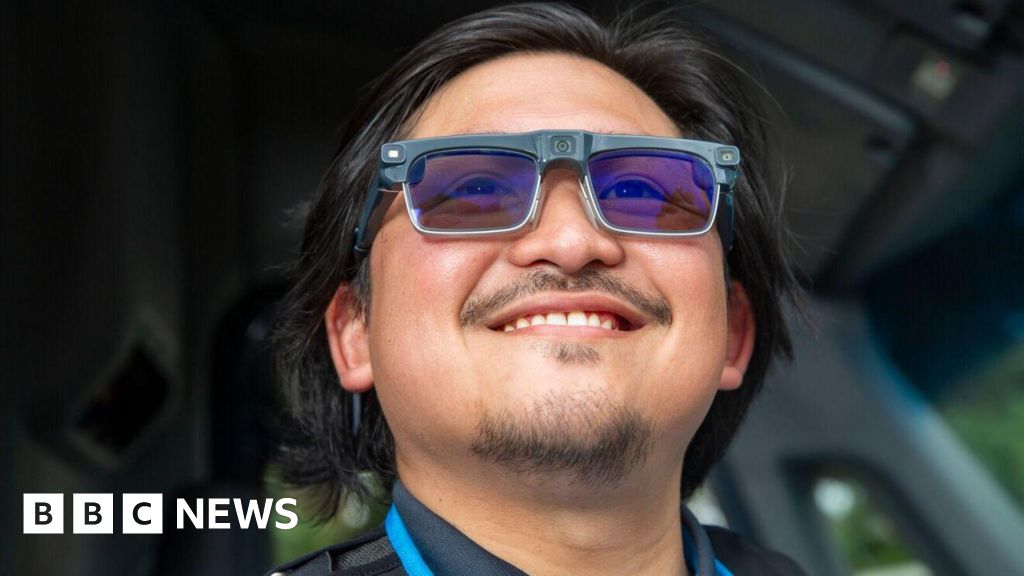
Lily JamaliNorth America technology correspondent
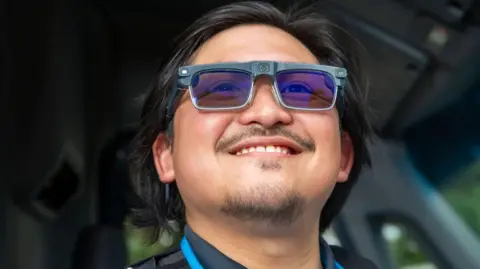 Amazon
AmazonAmazon has unveiled a prototype of artificial intelligence-powered smart glasses designed to be used by its delivery drivers.
The “Amelia” glasses include a camera and built-in display, and pairs with a waistcoat with a button drivers can press to take photos of deliveries.
“We’re testing it at a number of locations with over a dozen delivery service partners and hundreds of drivers across the country,” said Beryl Tomay, Amazon’s vice president of Transportation, at a launch event in Silicon Valley.
Amazon is the latest US tech giant to enter an increasingly crowded field of firms experimenting with wearables, but for now it is a product meant for drivers, not customers.
Although Amazon is still experimenting with the product, it plans to eventually make the smart glasses available to drivers first in North America, then globally.
Ms Tomay said that drivers “have been doing real deliveries with these” to customers.
“We custom designed it for that use case,” she added. “There’s a very specific application here.”
When asked by the BBC if the Amelia smart glasses might be marketed to consumers at some point in the future, Ms Tomay did not rule out the possibility.
Amazon also unveiled a robotic arm which it said is designed to work alongside warehouse employees to sort parcels with greater speed and accuracy.
The robot, which has been in use at a warehouse in South Carolina, will help reduce injuries and maximise the use of space in Amazon’s warehouses, the firm said.
Amazon is also preparing to roll out an artificial intelligence (AI) system in its warehouses to manage operations and provide workers with suggestions for improving efficiency.
“It pulls in historical and real-time data across a building to anticipate bottlenecks and keep operations running smoothly,” said the company.
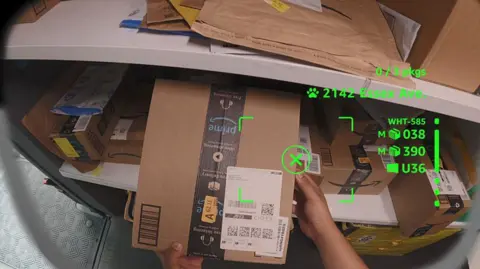 Amazon
AmazonInstagram and Facebook-owner Meta has also experimented with smart glasses in recent years.
At its Meta Connect conference last month, the company unveiled a range of smart glasses powered by its Meta AI technology, including a pair of Ray-Bans with a built-in display.
Unlike Amazon, Meta’s smart glasses target the mainstream consumer products market.
Meta presented the hardware as a technology that allows users to remain more engaged in the real world compared to smartphones.
For Amazon, the Amelia smart glasses could augment efficiency in the “last mile” of its delivery network.
Ms Tomay said the smart glasses can detect when they are in a moving vehicle, which prompts them to automatically shut off.
“From a safety perspective, we thought that was important. No distractions,” Ms Tomay told a group of reporters at an event in California.
Ms Tomay estimated that the glasses could create up to 30 minutes in efficiencies per 8- to 10-hour shift by minimising repetitive tasks and helping drivers to quickly locate packages in their vehicles.
The smart glasses also include a hardware switch on the controller that lets the driver turn off the glasses and all of its sensors, including the camera and microphone.
Drivers “can choose to keep it off,” she said.